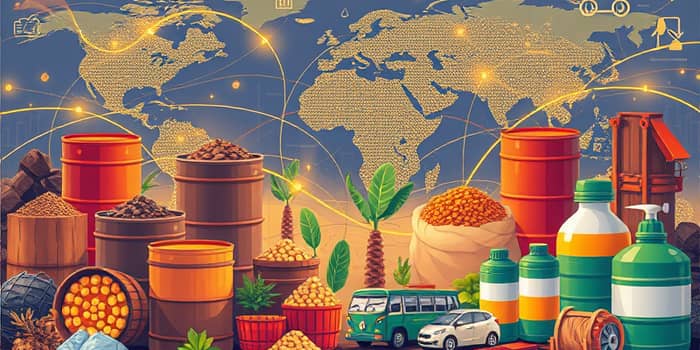
As global economies recalibrate after the pandemic era, commodity markets stand at a pivotal crossroads. Forecast data for 2025–2026 invites businesses, policymakers, and investors to adapt strategically to a landscape of falling prices and shifting demands.
The World Bank projects a broad decline in commodity prices of -12% in 2025 and -5% in 2026. If realized, this will mark the lowest nominal price levels since 2020 and, in real terms, dip below the 2015–2019 average. Such a trajectory reflects a blended picture: prices will remain above pre-pandemic norms, yet weakening global momentum threatens profit margins across sectors.
Early 2025 saw a 6% drop in April alone, driven by elevated inventories and soft macroeconomic signals. Energy prices fell 8%, industrial metals slid 7%, and agricultural commodities edged down 1%, with only fertilizers and precious metals holding ground.
Understanding the forces at play is essential for crafting resilient strategies. Key drivers include:
These elements combine to exert persistent downward pressure on raw material prices, challenging exporters and commodity-intensive industries to innovate.
The energy complex is poised for the steepest declines, as a convergence of oversupply, decarbonization policies, and rising electric vehicle adoption reshapes demand.
While oil prices slide under OPEC+ production increases and growing EV fleets (over 40% of new cars in China are electric or hybrid), natural gas in the U.S. bucks the trend. Higher winter demand and supply adjustments lift prices, nudging plants back to coal when economics favor it.
After a 2.5% gain in 2024, industrial metals are forecast to inch lower through 2025–2026 as construction and manufacturing activity cools.
Copper is transitioning from tight deficits to a marginal surplus through 2025, driven by new mine expansions. Yet long-term deficits tied to the energy transition keep supply risks alive.
Iron ore exhibits a widening surplus, pressuring steelmaking raw materials amid weak demand. Nickel remains in significant surplus despite a recent narrowing trend, with implications for battery makers. Precious metals—gold and silver—offer relative resilience, buoyed by safe-haven flows amid trade tensions.
Agricultural prices are set for gradual declines of 1% in 2025 and 3% in 2026, underpinned by stronger harvests and normalizing logistics.
Food crops will lead the mild downturn as supply rebounds from pandemic disruptions. Beverage commodities such as coffee and cocoa face supply risks from weather extremes, introducing localized volatility despite broader softness.
Fertilizers buck the trend, with inventories tight and policy shifts in major exporting nations keeping prices supported.
The commodity landscape is being irreversibly altered by long-term structural shifts. The energy transition and decarbonization pivot demand toward metals like lithium, cobalt, and nickel for battery and renewable infrastructure.
Demographic change and slower economic maturation in emerging markets will moderate demand growth. Meanwhile, supply chain realignments—sparked by the Ukraine war and shifting alliances—are reconfiguring global trade, especially for grains and energy feedstocks.
In an era of uncertainty, proactive risk management and strategic foresight can unlock advantage. Key considerations include:
To thrive, stakeholders must blend robust scenario planning with agile procurement, invest in efficiency enhancements, and diversify supply sources. Embracing digital tools for real-time market intelligence and forging collaborative industry partnerships will fortify resilience against price swings.
Ultimately, the projected trough in commodity prices presents a dual narrative: one of challenge for producers reliant on high price environments, and one of opportunity for consumers and technology adopters leveraging lower input costs to innovate. By understanding the nuanced interplay of cyclical trends and structural drivers, businesses can chart a course toward sustainable growth in the evolving raw materials arena.
References













